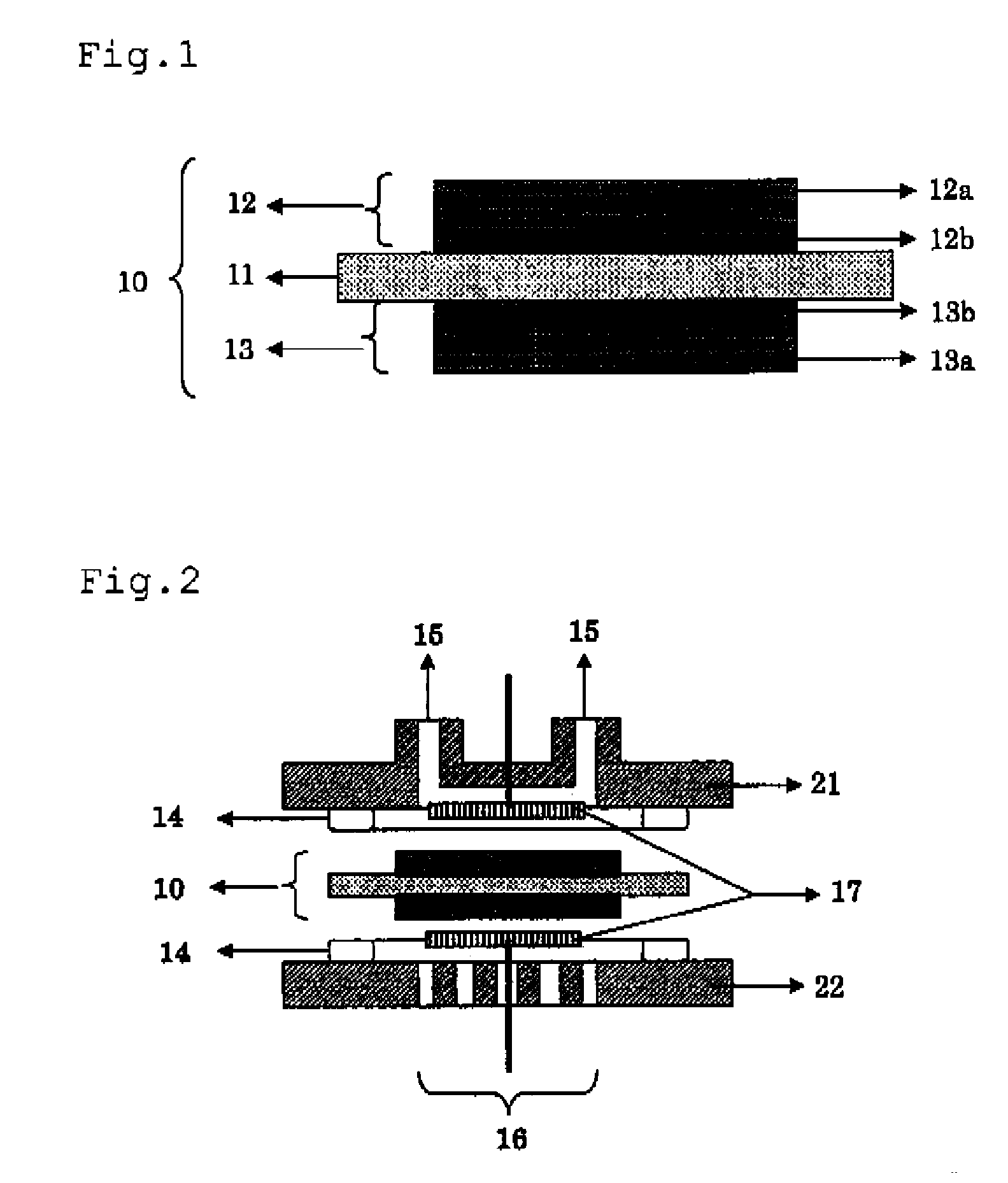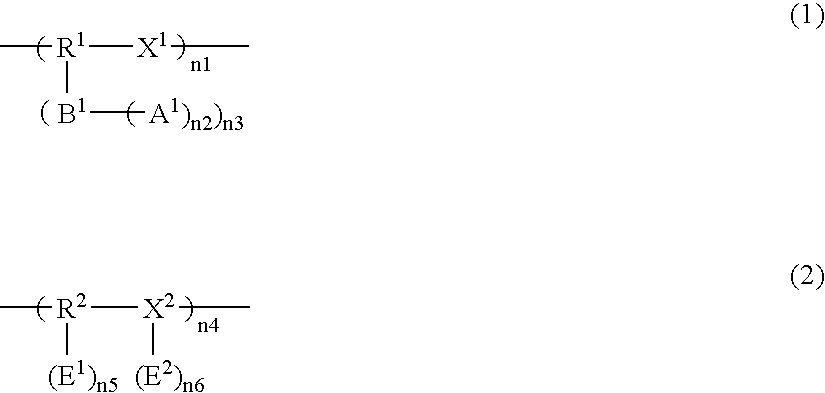Catalyst Material For Use In Fuel Cell, Catalyst Membrane, Membrane Electrode Assembly and Fuel Cell
- Summary
- Abstract
- Description
- Claims
- Application Information
AI Technical Summary
Benefits of technology
Problems solved by technology
Method used
Image
Examples
example 1
Manufacture of Catalyst Material for use in Fuel Cell (1)
[Manufacture of Catalyst Material for use in Fuel Cell M-1] (1-1 Type)
(Modification of Carbon Material)
[0375] As the carbon material, a carbon black (trade name of products: Carbon ECP, manufactured by Ketchen Black International Co.) (a) was used and reaction was conducted in accordance with the following scheme (1) (in the following scheme 1, CB shows a portion of the carbon black. CB has identical meaning here and hereinafter)
[0376] Reaction was conducted in accordance with the scheme (1). That is, 20 g of the carbon black (a), 180 mL of N,N-dimethyl formamide, 60 g of dibromopentane, and 24 g of potassium carbonate were added and reacted at 110° C. for 24 hours while stirring in a nitrogen gas stream. After the reaction, the product was washed with water and then with dichloromethane, and dried under a reduced pressure to obtain 19.9 g of a carbon material (c-1A), introduced with bromopentyl groups. As the result o...
example 2
Manufacture of Fuel Cell
[Manufacturing Method 1]
[0464] A fuel cell was manufactured by using the catalyst material for use in the fuel cell in Example 1. 2 g of each catalyst material for use in the fuel cell, 15 g of a Nafion solution as a binder (5% aqueous alcohol solution) were mixed and dispersed by a supersonic dispersing device for 30 min. The obtained dispersion was coated on carbon paper (350 μm thickness), dried and then punched into a circular shape of 9 mm diameter to manufacture a catalyst membrane.
[0465] A Nafion 117 membrane was used as the solid electrolyte membrane and the catalyst membrane obtained as described above was bonded on both surfaces of the Nafion membrane 117 such that the coating surface was in contact with the Nafion membrane 117 and hot press bonded by hot press to manufacture an MEA.
[Manufacturing Method 2]
[0466] An MEA was manufactured in the same manner as in the preparation method 1 except for manufacturing the solid electrolyte and the bin...
example 3
Evaluation for Fuel Cell
[0467] The MEA obtained in Example 2 was set to a fuel cell shown in FIG. 2, and a hydrogen gas was caused to flow in anode side openings 15. In this case, an atmospheric air was caused to flow to cathode side openings 16. A potentiostat was connected between the anode electrode 12 and the cathode electrode 13 to record a current value at 400 mV. The result is shown in Table 1.
TABLE 1CatalystBinder - solidsupportingelectrolyteCurrent valuecarbonmembrane(A / cm2)RemarksM-1E-12.43InventionM-2E-12.26InventionM-3E-12.33InventionM-4E-12.53InventionM-5E-12.21InventionM-6Nafion 1172.19InventionM-7Nafion 1172.36InventionM-8E-12.28InventionM-9E-12.33InventionM-10Nafion 1172.21InventionM-11E-12.18InventionM-12E-12.46InventionM-13E-12.29InventionM-14Nafion 1172.11InventionM-15Nafion 1172.27InventionM-16Nafion 1172.01InventionM-17Nafion 1172.23InventionM-18Nafion 1172.23InventionM-19Nafion 1172.16InventionR-1Nafion 1171.68ComparativeExample[0468] It is recognized that ...
PUM
 Login to View More
Login to View More Abstract
Description
Claims
Application Information
 Login to View More
Login to View More - R&D
- Intellectual Property
- Life Sciences
- Materials
- Tech Scout
- Unparalleled Data Quality
- Higher Quality Content
- 60% Fewer Hallucinations
Browse by: Latest US Patents, China's latest patents, Technical Efficacy Thesaurus, Application Domain, Technology Topic, Popular Technical Reports.
© 2025 PatSnap. All rights reserved.Legal|Privacy policy|Modern Slavery Act Transparency Statement|Sitemap|About US| Contact US: help@patsnap.com



